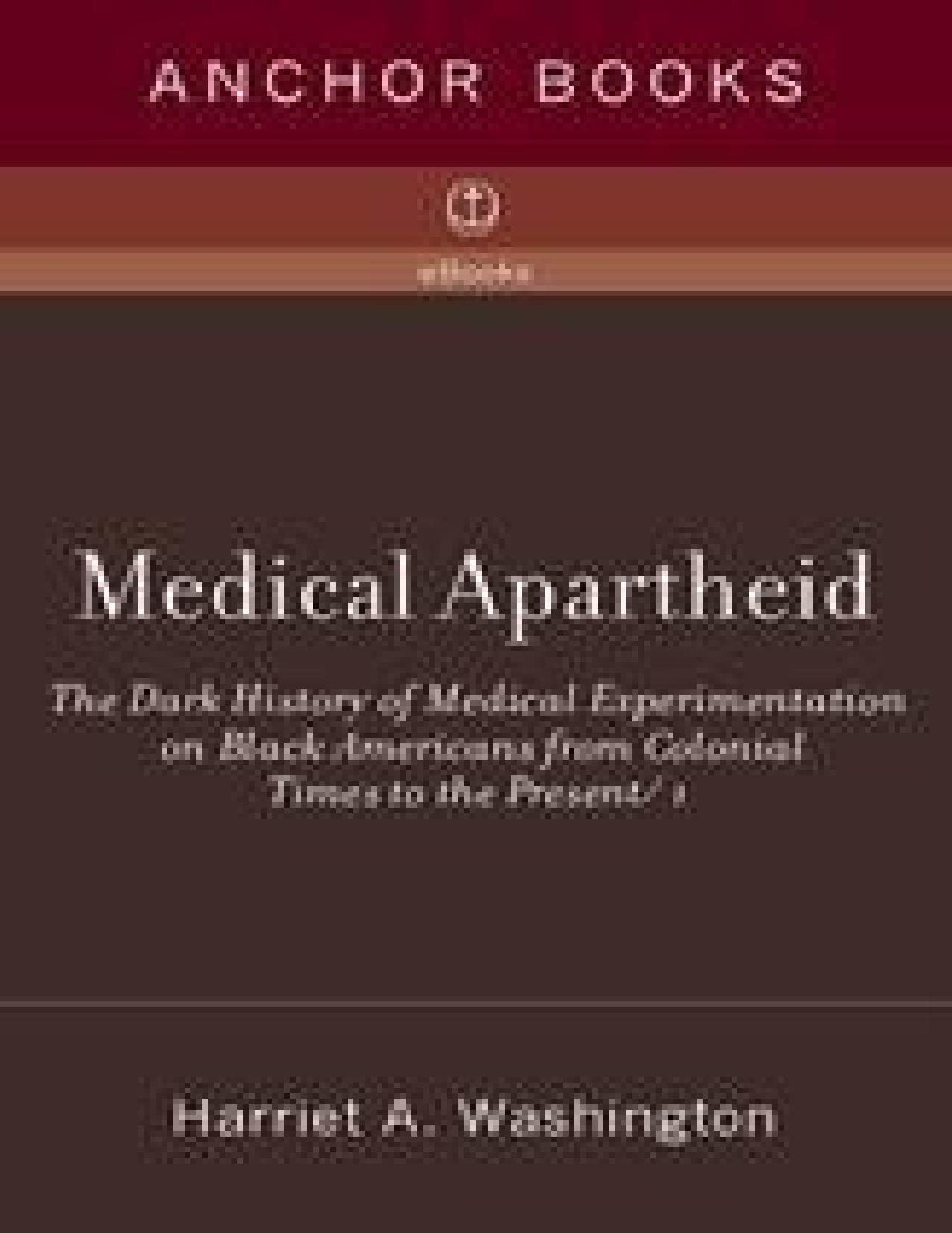Medical Apartheid by Harriet A. Washington

Author:Harriet A. Washington
Language: eng
Format: epub, pdf
ISBN: 9780767929394
Publisher: Knopf Doubleday Publishing Group
Published: 2008-01-07T16:00:00+00:00
The ACHRE’s broad suggestion that blacks were underrepresented in prison medical experimentation is fatally weakened by the fact that the commission looked at only one (unnamed) prison experiment at one point in time, and thus was not representative. But even the straw man the ACHRE set up demonstrates the disproportionate use of African Americans in prison research. Black Americans in 1975 constituted only about 11 percent of the U.S. population, so that the 31 percent utilized in this prison’s experiment meant that African Americans were subjected to research at a rate just under three times higher than their presence in the nation’s population.
The ACHRE looked at this high black experimentation rate only in comparison to the even higher black incarceration rate. This is myopic, because it looks only at the artificial universe of prisons, rather than at the entire community of African Americans. This is an essentially communitarian fallacy, which means that the analyses have ignored the most cohesive affected community: the community of African Americans, not the community of prison inmates.
Moreover, although scientists’ early prison-research records were notoriously sloppy and frequently “lost,” extant records do make specific references to black prison subjects. Also, those researchers who had a dearth of black subjects, such as Heller, complained of their frustrations in gaining a more diverse subject population, suggesting that they considered the inclusion of African American prisoners in research the norm.
However, various prison studies had different racial compositions and a few recorded experiments were designed as all-white, just as some used only blacks or mostly blacks. Chapter 6, has already described how Joseph Goldberger, M.D., chose to induce pellagra only in white prison inmates to dramatize that pellagra was not a “black disease,” but would strike malnourished whites, as well.
Other medical experiments were reserved for African Americans, and these were often the most risky and painful, explains Hornblum. At the Holmesburg Prison complex, where decisions about who participated in particular experiments were often left to inmate-assistants, he explains, “it is possible that the racism in American culture was reflected in the inmates’ decisions about who participated in a given test.”15
For example, only “healthy colored male” volunteers were permitted to enroll in a protocol for one 1957 Philadelphia experiment “to promote the inoculation of human skin with…herpes simplex and herpes zoster,”16 which were painful, incurable viral infections. However, another Holmesburg experiment, which targeted young white volunteers, required only that they lower an arm into a detergent, sodium laurel sulfate (found in many shampoos), for an hour daily over fifty-five consecutive days.17
Prison researchers often veiled the racial composition of their research population for the same reason that Marion Sims once hid the racial composition of his vesicovaginal fistula patients: concern that scientists would appear to exploit powerless black patients. For example, when researchers wrote journal articles about the approximately fifteen thousand Maryland inmates of state juvenile institutions subjected to genetic tests for XYY syndrome, 85 percent of whom were black, they focused upon the mostly white minority subset of this research program to hide this true racial composition of the experiment, as will be detailed in chapter 11.
Download
This site does not store any files on its server. We only index and link to content provided by other sites. Please contact the content providers to delete copyright contents if any and email us, we'll remove relevant links or contents immediately.
| African-American Studies | Asian American Studies |
| Disabled | Ethnic Studies |
| Hispanic American Studies | LGBT |
| Minority Studies | Native American Studies |
Cecilia; Or, Memoirs of an Heiress — Volume 1 by Fanny Burney(32439)
Cecilia; Or, Memoirs of an Heiress — Volume 2 by Fanny Burney(31875)
Cecilia; Or, Memoirs of an Heiress — Volume 3 by Fanny Burney(31858)
The Great Music City by Andrea Baker(31531)
We're Going to Need More Wine by Gabrielle Union(18973)
All the Missing Girls by Megan Miranda(15595)
Pimp by Iceberg Slim(14399)
Bombshells: Glamour Girls of a Lifetime by Sullivan Steve(13979)
Talking to Strangers by Malcolm Gladwell(13233)
Norse Mythology by Gaiman Neil(13215)
Fifty Shades Freed by E L James(13163)
For the Love of Europe by Rick Steves(13103)
Mindhunter: Inside the FBI's Elite Serial Crime Unit by John E. Douglas & Mark Olshaker(9209)
Crazy Rich Asians by Kevin Kwan(9172)
The Lost Art of Listening by Michael P. Nichols(7412)
Enlightenment Now: The Case for Reason, Science, Humanism, and Progress by Steven Pinker(7242)
The Four Agreements by Don Miguel Ruiz(6639)
Bad Blood by John Carreyrou(6558)
Weapons of Math Destruction by Cathy O'Neil(6152)
